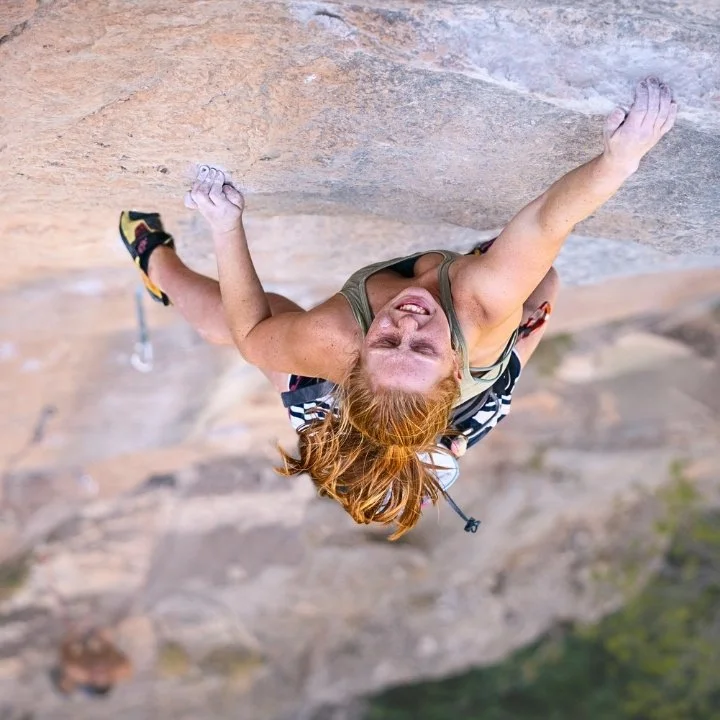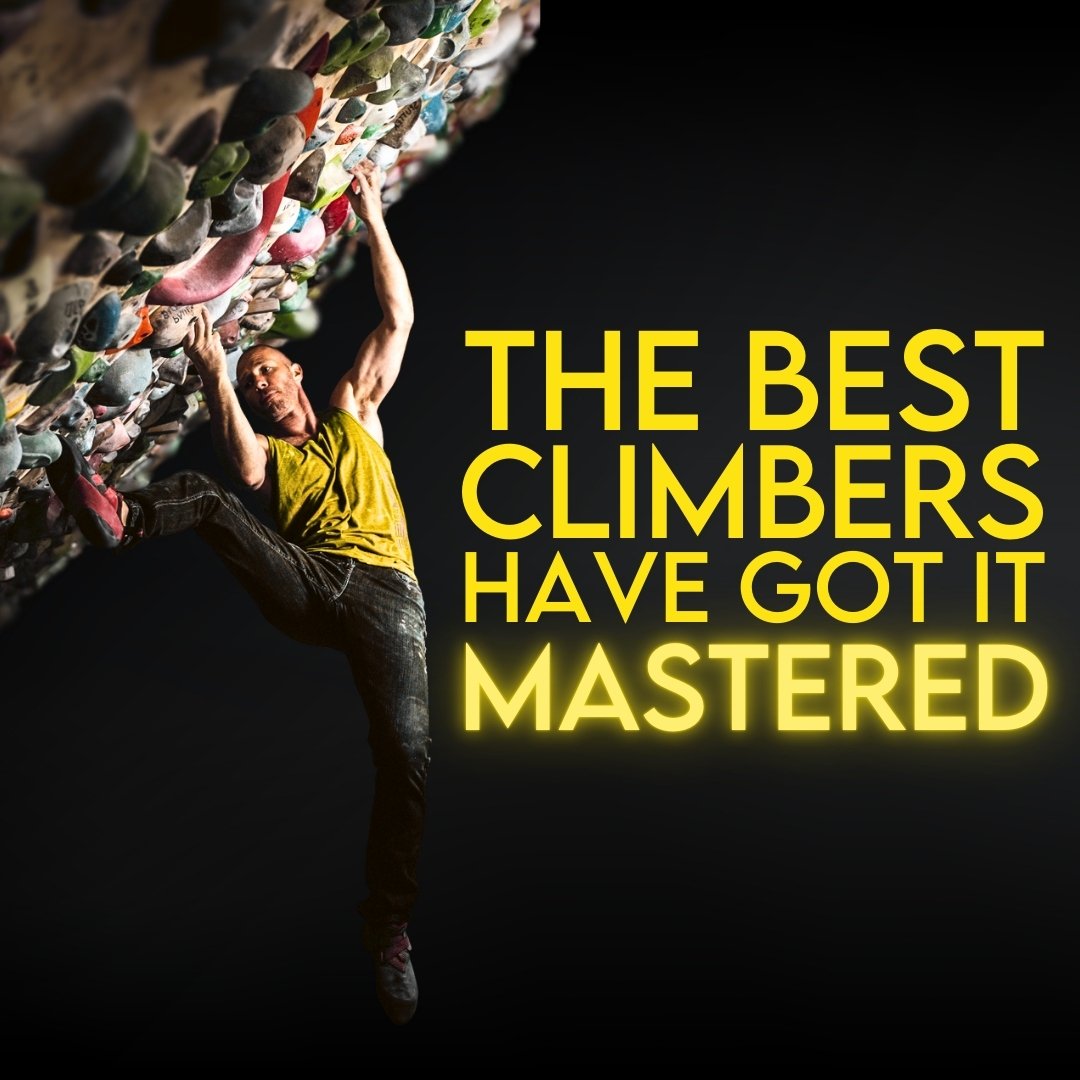How Good Tactics Can Be Bad for Your Climbing
I am 100% an advocate for using good tactics. Always.
In fact, I’d say most people don’t use good tactics often enough, and I’d go as far as to say that most of you could send more things if you’d just use some basic tactics.
HOWEVER…
It’s entirely possible to learn the power of a good tactical approach and then overdo it – applying it to every situation – and actually slow down your sends.
What you should have done instead of employing more tactics is try really effing hard and then you might have gotten the project done weeks earlier.
Is that you?
Are you the person who always says that it felt hard until you did it – and then it just felt easy? Are you downgrading everything you send because you’ve worked it into oblivion?
Then yes, that might be you. You might be abusing tactics. Or maybe a better way to look at it would be that you’re actually skipping the absolute MOST important tactic of all.
So I’m going to go over why you shouldn’t abuse the tactical approach, show you the tactic you’re actually skipping, and help you learn how to recognize when you should employ it – and when you should maybe hold back.
Let’s get into it.
If you’ve watched The Climb on HBO, then you probably remember the scene where a contestant, Deco, drops off after he’s made it to the next round, rather than finishing the climb. He then catches some heat from Chris Sharma. And if we’re honest here, Deco was just exercising good tactics. But this is Chris Sharma. The guy who is well known for trying harder than just about anybody, in every situation. He expects people to give their best. Plus he probably had producers breathing down his neck about needing some exciting moments and wishing Jason Momoa was on screen for more than 35 seconds an episode, and then Deco just takes the easy way out.
I’m not mad at him. But it DOES highlight an important issue that a lot of climbers fall victim to. Over time as we explore a more tactical approach, we realize how things can go from impossible to possible to dialed to easy. It seems like a miracle when it happens. And we want that every time.
We want it to feel easy.
But there is this strange incongruity in sport – yes, we celebrate the athletes who clearly are trying really hard – but even more so, we celebrate it when an athlete makes a difficult thing look easy. We love it when someone walks something. And the best way to absolutely walk a hard rock climb is to work it to death. To wait until the send is imminent to really go for it. Tactics.
But is that really a good thing?
Sure, sometimes. But…
Saving your top level effort for only sending means that either you are rarely giving it your all, or you aren’t climbing things that are actually very hard for you.
There’s a good balance somewhere in the middle, between an all out scrappy effort and a worked-into-submission send. If you can find it, you’ll send more things faster AND you’ll get better at climbing – not just better at applying tactics.
But how do we find that balance?
Age old question, right? Do I look for better beta or just try to do it? More links or start making redpoint attempts? Do I try hard now and potentially waste energy, or do I keep working it in hopes of finding an easier method?
The answer to all of these questions, really, is both. You can do both. It’s not an either/or issue.
HERE’S THE KEY:
You need to look at redpoint attempts or hard send efforts as testing your theory.
You think that maybe you should go ahead and try it from the ground?
Test your theory.
Give it a good honest effort. If you don’t send, it’s likely that something will be illuminated. A sequence that is too hard on the go, a rest stance that just isn’t restful yet, a missing foot move that you hadn’t quite connected yet but forgot about. Trying hard – if you can do it honestly – will highlight where you aren’t ready, where your theory still needs more work.
Sidenote: if you aren’t sure if you really try as hard as you could – and let’s be honest, most of us don’t – my new Try Harder Toolkit can help you learn how. It’s an entirely free, one hour video series that will help you learn what both science and experience say about how we can access our top levels of effort.
Once you’ve tested your theory and come up short, then you can go back to a tactical approach.
Address the things that were highlighted. Be systematic about it. When you’ve checked those boxes, whatever they are – better beta, learning a rest stance, that missing foot move, whatever – test your theory again.
Whenever I hear climbers talk about the redpoint process, they do so as if it’s a linear thing. You learn the moves, you link the sequences, you start giving send attempts, and continue until you do it. And that’s a nice idea, but it doesn’t always work that way, particularly if you’re climbing on something that is near your upper limits. In those scenarios you might have to give send attempts and then rewind to an earlier point in the process, even all the way to learning how to do moves a different way. You might do that multiple times throughout the entire process.
So if you plan for that by knowing that you’re going to develop a theory and then test it, then fix those issues and test again, you’ll already have a headstart on how the process actually works.
THIS CAN HELP YOU IN TWO DIFFERENT WAYS:
First, if you’re the type who rushes into the send attempts and then spends the next 30 tries falling off of the same move, you’ll already have the framework in place to help you reverse back to an earlier step, work the thing out, and you’ll likely send faster.
Or, let’s say you’re the type of climber who has done the moves and the links, and wants to do bigger links, and every possible overlapping link, and then try alternate beta and a slight knee shift at the rest stance so you can get 1% more back… all before you start from the ground with intention to send. Instead of that, if you plan to regularly test your theories, once a session or every two to three sessions, you might find that you send much sooner than you thought you could.
Keep in mind that we’re all trying to find out how good we can be at climbing. For most of us, that’s the ultimate goal. If you only come at it from one angle, when there is an entirely other tool that you could be using, will you ever really know the answer?
Probably not.
There’s no harm in being a tactical master. But it’s even better if you also know how to try really hard.
EXPLORE FURTHER
You might enjoy these related articles, episodes, and other resources:
The Atomic Elements of Climbing Movement
Climb Your Project Sooner | The Art of Execution
Taped Tips | The Most Underrated Climbing Movement Skill
SUPPORT + CONNECT
Help us keep the show sponsor-free when you join our Patreon Community for as little as $3.
Get two or more bonus episodes every month on Patreon, Spotify, or Apple.
Subscribe to THE CURRENT and get a monthly exploration of how we can all become better climbers.




















A better way to view grades and progression?